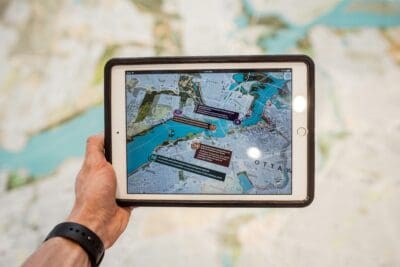In a rapidly evolving skill-development landscape, community colleges must stay ahead of technological advancements to serve as innovative economic engines in their regions. To help their communities develop in-demand skills for the quality jobs of the future, community colleges need to embrace groundbreaking augmented reality (AR) training. Foundational AR training equips learners with the skills to create their own AR experiences, teaching them how to build, service, and incorporate AR tools across a wide variety of applications. However, because AR training opportunities are still emerging, many community college leaders might be unsure of where to begin, especially when looking to serve a diverse group of learners, some of whom might be facing systemic barriers in education and the job market.
Jobs for the Future’s (JFF) recent AR pilot partnership with eight community colleges across diverse regions in the United States has revealed a variety of approaches for where to begin AR programming at the college level. We saw four main approaches:
A. Programming exclusively for noncredit learners
B. Wider recruitment through a noncredit offering open to all learners
C. Programming embedded within an existing academic track
D. Collaborative programming by a group of colleges
Each approach has certain advantages for recruitment, implementation, and program sustainability. These snapshots of diverse training strategies taken by our partner colleges should inform and inspire community college leaders seeking insights relevant to the distinct needs of their institution and learners. It is also worth noting that all partners established programming fairly quickly—over just one semester—so these initiatives should be viewed as starting points for further learning and refinement.
For more detailed information on launching augmented reality programming,our








